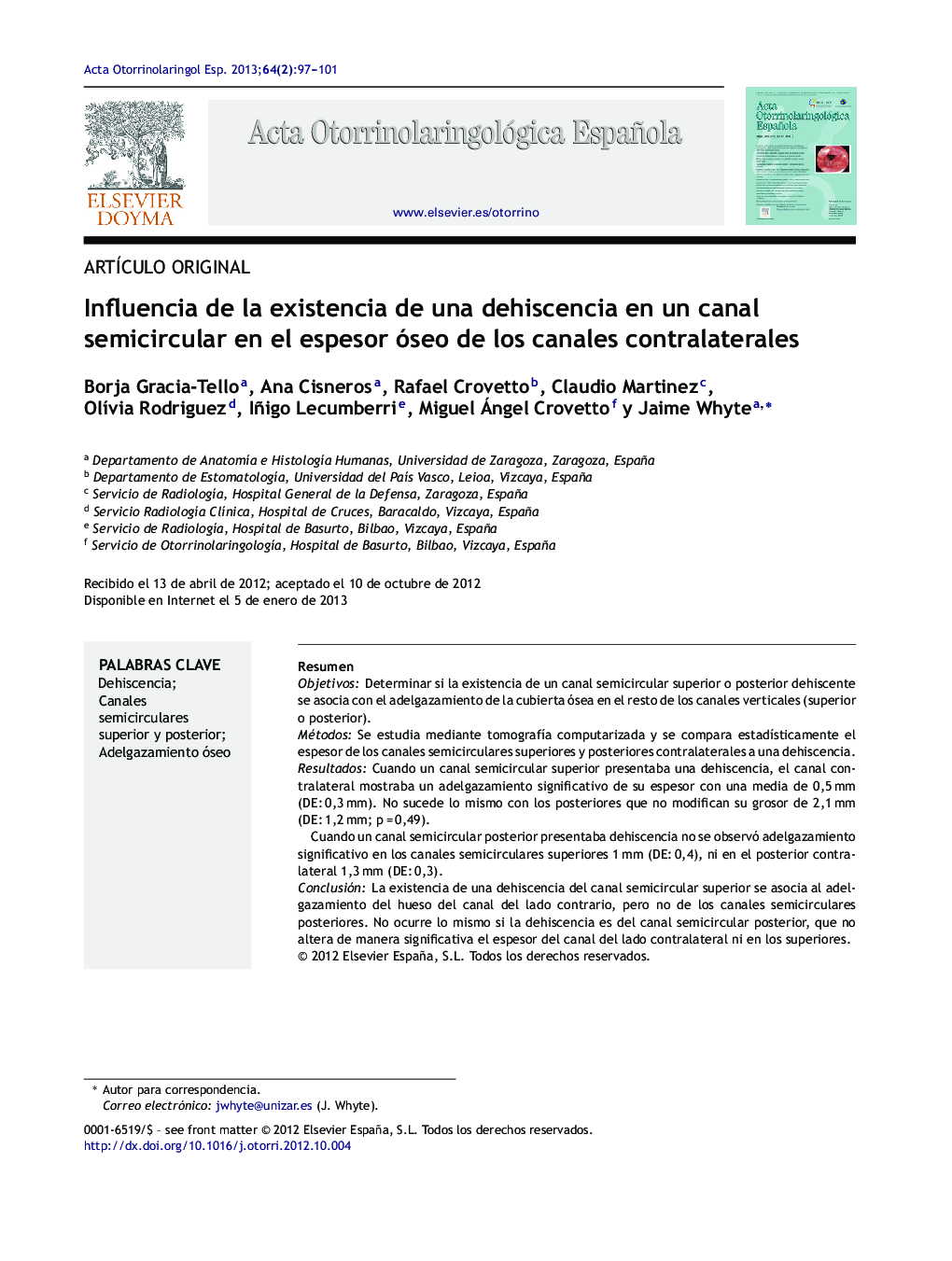| Article ID | Journal | Published Year | Pages | File Type |
|---|---|---|---|---|
| 4102126 | Acta Otorrinolaringológica Española | 2013 | 5 Pages |
ResumenObjetivosDeterminar si la existencia de un canal semicircular superior o posterior dehiscente se asocia con el adelgazamiento de la cubierta ósea en el resto de los canales verticales (superior o posterior).MétodosSe estudia mediante tomografía computarizada y se compara estadísticamente el espesor de los canales semicirculares superiores y posteriores contralaterales a una dehiscencia.ResultadosCuando un canal semicircular superior presentaba una dehiscencia, el canal contralateral mostraba un adelgazamiento significativo de su espesor con una media de 0,5 mm (DE: 0,3 mm). No sucede lo mismo con los posteriores que no modifican su grosor de 2,1 mm (DE: 1,2 mm; p = 0,49).Cuando un canal semicircular posterior presentaba dehiscencia no se observó adelgazamiento significativo en los canales semicirculares superiores 1 mm (DE: 0,4), ni en el posterior contralateral 1,3 mm (DE: 0,3).ConclusiónLa existencia de una dehiscencia del canal semicircular superior se asocia al adelgazamiento del hueso del canal del lado contrario, pero no de los canales semicirculares posteriores. No ocurre lo mismo si la dehiscencia es del canal semicircular posterior, que no altera de manera significativa el espesor del canal del lado contralateral ni en los superiores.
ObjectivesOur objective was to determine if the existence of dehiscence in the superior or posterior semicircular canal was associated with the thinning of the bone roof in the rest of the vertical canals (superior or posterior).MethodsThe thickness of the superior and posterior semicircular canals contralateral to a dehiscence was studied using computerized tomography and compared statistically.ResultsWhen a superior semicircular canal had a dehiscence, the contralateral canal showed a significant mean decrease in its thickness of 0.5 mm (SD: 0.3 mm). This was not the case if the dehiscence was in the posterior semicircular canal, where the thickness of 2.1 mm remained unchanged (SD: 1.2 mm; P=.49).When a posterior semicircular canal showed dehiscence, no significant thinning was shown in the superior semicircular (1 mm; SD: 0.4) or in the posterior contralateral (1.3 mm; SD: 0.3) canals.ConclusionThe existence of a dehiscence in the superior semicircular canal is associated with bone thinning in the canal on the opposite side, but not with the posterior semicircular canal. In contrast, if the dehiscence is in the posterior semicircular canal, contralateral and superior canal thickness is not modified.
